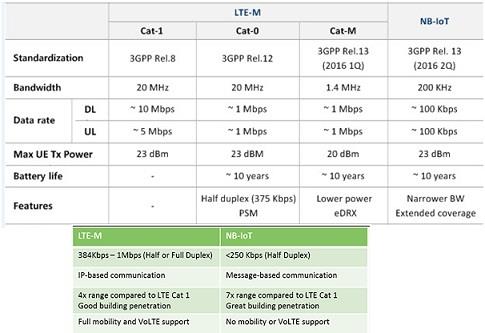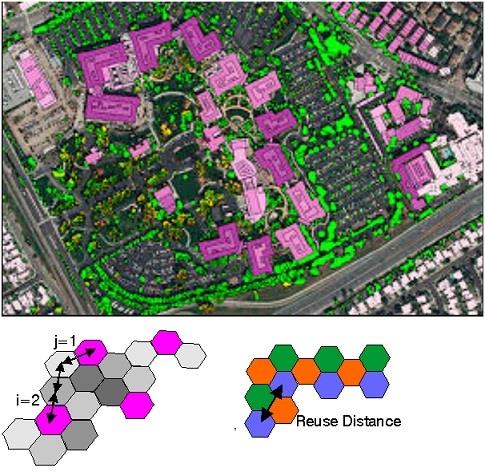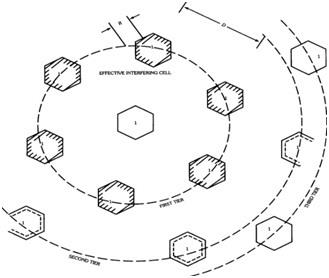GET ASSURED A++ GRADE IN EACH ME601 TELECOMMUNICATION MODELLING AND SIMULATION ASSIGNMENT ORDER - ORDER FOR ORIGINALLY WRITTEN SOLUTIONS!
ME601 Telecommunication Modelling and Simulation Assignment - Melbourne Institute of Technology, Australia
Assessment Title - Analysis and Simulation of the Cellular IoT (NB-IoT, LTE-M, LTE CAT0, LTE CAT1 and 5G)
Learning Outcomes -
a. Design, analyze and evaluate wireless mobile communication systems;
b. Research and analyze recent developments, and relate them to the principles of mobile network design and network management;
c. Apply engineering techniques, tools and resources to plan and model cellular networks;
d. Apply, and evaluate the application of systematic cellular networks engineering synthesis and design techniques;
Objectives - The objective of this group project is to investigate into the technical aspects of Cellular IOT, for wireless communication. Students are expected to submit a single group report which in the minimum:
2. Investigate origin of Cellular IOT based on LPWAN like LoRa, Sigfox and other low cost wireless networks.
"Internet of Things" (IoT) has lots of vast applications which will need more number of technologies. This technology must possess operation on low power consumption. Also the cost of the technology is less. As IoT has more intricate work to do, the technology associated with IoT must have "low complexity end devices", so the workflow shall be efficient and works without any obstructions. Also, that device must have a long-distance reach to contact without any turbulence. Most of the IoT devices are dependent on battery backup as they need the power to run, the device must have a long battery life or backup to operate as power failure led to turn off the devices altogether. The area of operation of these IoT based devices can be up to several kilometres, so the devices must have extended range capability to contact.
Hense keeping all these aspects for "IOT based devices" there is an evolution of LPWAN technologies, which are "Low Power Wide Area Network". These can be very helpful in reaching out all the aspects needed for IoT devices. Some of the standard LPWAN technologies that are widely used till date for the IoT devices are "SigFox, NB-IoT or LoRaWAN" [2].
The need for devices of IoT is overwhelming nowadays and cannot be ignored. This originates the cellular IoT. The reach of SigFox is increasing day by day as from there current marketing research they are covering 45 countries till Sep 2018.
NO PLAGIARISM POLICY - ORDER NEW ME601 TELECOMMUNICATION MODELLING AND SIMULATION ASSIGNMENT & GET WELL WRITTEN SOLUTIONS DOCUMENTS WITH FREE TURNTIN REPORT!
LoRa - It is an open-source based on a non-profit organization known as "LoRa Alliance". Its main objective is to boost the entire ecosystem of several LPWAN technologies. The founding company associated with LoRa is "MicroChip, Semtech, IBM, Cisco, Singtel, Fastnet, KPN, Belgacom, Swisscom and Bouygues telecom". Its current active member comprises of 400 members from all over the world.
SigFox - It is a French based company which was founded in the year 2009. The marketing research and their campaign help them to grow widely over Europe and have beneficial traction in the field of LPWAN. Due to its popularity and work in the field of LPWAN, it has many famous vendors which include "Texas instruments, silicon labs and Axom". Because of substantial impact in Europe, it is increasing its area of operation by now focusing in the US.
SigFox uses the rate of slow modulation to manage the extended range. This technology is often considered as proprietary technology, and so it is the best option for the devices whose working needs small "infrequent bursts of data".
Weightless SIG - It was founded in the year 2008 and called as "weightless special interest group". The main objective of it was to standardize the technologies of LPWAN. The promoters of weightless SIG members include "ARM, Sony- Europe, Accenture, M2COMM and Telensa". The spectrum that uses by weightless SIG is unlicensed which operates on sub-one gigahertz [1]. They launched three versions for each different purpose. The name of these versions is "Weightless-W, Weightless-N, Weightless-P".
3. Investigate 4G based Cellular IOT wireless network such as NB-IOT, LTE-M, and LTE-CAT. Compare them and discuss the differences between them.
As stated in the above context, the increasing and regular use of IoT devices has led to originate technology of LPWAN. Traditional 3G networks consume too much power, and they do not have much speed in data transfer. So this originates the need for the fast and reliable network which can consume less power and have sufficient data transfer rate. There evolve cellular network which is based on the 4G spectrum. Some of the standard cellular LPWAN technology includes "NB-IoT, LTE-M, and LTE-CAT". These have very well in latency as well as in speed. These LPWAN technologies are used for " low-bandwidth defined by 3GPP release 13". The best part of these networks is they have a low cost; they also consume very less power so that it can be run for a long time and moreover all have extended coverage.
NB-IoT is a 3GPP based cellular network and is growing fast over the generation. It is leading in its market and is used in many IoT based devices such as wearables, smart parking, and individual industrial solutions. It has individual coverage in indoor. It is much efficient in cost. Also, it can manage or handle the maximum number of connections simultaneously. The power consumption used by these networks is very less and can be used for a long time without any turbulence. The architecture framework of these networks is so much optimized. It can connect up to "50000 per NB-IoT network cell".
GET READYMADE ME601 TELECOMMUNICATION MODELLING AND SIMULATION ASSIGNMENT SOLUTIONS - 100% PLAGIARISM FREE WORK DOCUMENT AT NOMINAL CHARGES!
LTE-M devices are much cheaper in rate and connect using chips to 4G networks. These chips contain narrow bandwidth and are half-duplex; these make it cheaper to make. For saving the battery backup, it uses "deep sleep" mode, which is term as "power saving mode". Also, at the same time, it wakes up periodically to make a connection with the networks [4]. The data rate of LTE-M is 100kbits/s, so for the cost of service is less for LTE-M.
Some of the considerations used for LTE-M are:
1. PPP connections - UDP or TCP are the commands used by LTE-M devices for receiving or sending any data between the networks. PPP cannot be hosted in devices of small and sensor. To generate host a hard work is required.
2. Power & Security - these devices have water and oil as the primary tool for power and security. Linux operating system (OS) can easily handle "MQTT on AWS IOT" which are very complex. However, MCU based on power can struggle to operate.
3. "Holy pulse current, batman" - To obtain 23 dBm transmit power, an LTE-M device will need more current than usual which can be 500mA or higher. Specific super caps can be helpful in this case with proper battery backup.

The above both tables show the comparison between the LTE-M and NB-IoT.
4. Investigate what is proposed for Cellular IOT in 5G and compare to Cellular IOT system based on 4G.
The 5G spectrum is eagerly waiting for by many. People want new technology for the wireless network as they are swift and efficient [3]. The 5G devices can have a very high transfer rate of data. It will have low latency which will develop new and unique videos and applications with high-bandwidth. IoT technologies "LTE-M and NB-IoT" have sufficient need for the 5G networks need. This statement is entirely correct; today's "LTE-M and NB-IoT" have as much as power and latency to handle high bandwidth services.
The "LTE-M and NB-IoT" becomes famous and only known for 4G technology; however, they can also be very much useful and can play a significant role in the upcoming 5G networks.
Moreover "the 3rd generation partnership project" also known as 3GPP has stated that only "LTE-M and NB-IoT" will be considered for upcoming 5G as a 5G LPWA. During the design of "LTE-M and NB-IoT," it was considered to be operative with the LTE system. Same is done for 5G; special considerations are adopted for the design of 5G NR system. This will help "LTE-M and NB-IoT" in the expansion of 5G.
MOST RELIABLE AND TRUSTWORTHY ME601 TELECOMMUNICATION MODELLING AND SIMULATION ASSIGNMENT HELP & HOMEWORK WRITING SERVICES AT YOUR DOORSTEPS!
Sierra wireless - It is a true leader in "LTE-M and NB-IoT" by backing enterprises who are using or interested in using "LTE-M and NB-IoT" to make applications [6]. It backing includes "Airprime HL series and WP series of embedded modules for LTE-M and NB-IoT cellular networks". This is the best of the best power saving tools with global support. This can also be useful for low form factor by integrating GNSS, which is used for tracking assets.
One can say that 5G will bring more new capabilities which can be bad for some market sector. However, a clear understanding is needed for knowing that "LTE-M and NB-IoT" is already in future technology needed for applications. 4G comes into a market during the late 2000s. Obviously, 4G is far better than 3G. 4G increases the speed of the internet to five hundred times faster as compared to 3G. It also added some more features like HD interference in videos, precise and fast video calls, and with a well-equipped browser with fast accessing [5]. This brings revolution in the networking market and thus increases its market widely. This also enhances mobile phones industries.
4G becomes a familiar and essential instrument for life nowadays, but now it should be again changed in order to make more relevant and efficient to humanity. IoT is nowadays essential and to fulfil all its requirements 4G need to be upgraded as it will need a number of connections for IOTs. According to a survey by the year 2020, 20 billion will have internet access devices. This requires a massive connection with the capacity to manage it. This all can only be achieved by introducing to 5G networking system.
The 5G is promising to have the fastest speed "up to 100 gigabits per second". This will be a hundred times quick and fast than 4G [7].
5. Use CellPlanner to simulate the air interface of at least one of Cellular IOT in 4G or 5G.

6. Investigate the requirement of IOT devices for connecting to cellular network and address the following design consideration. You can simulate scenarios in CellPlanner to analyze the requirement.
There are many different types of IoT devices with widely used requirements. Every single device needs specific requirements to operate [9]. These requirements can be "number of connections, the cost per connections, power availability, and the amount of data transfer required for both upstream and downstream". Networks of applications require decent, extensible, and secure connectivity for devices. By using batteries instead of supplying AC power to devices can be useful in getting minimum cost connections for remote devices.
a. IOT receiver requirement (Receive Signal Strength RSS).
The typical path of IoT devices to connect with BS is accessing random channel of the LTE system. To avoid any congestion, there are many solutions when a vast number of IoT devices while finding a connection with BS [8]. Among all the solution to avoid congestion, ACB or "Access class barring" is very popular and is used by many. The methodology used in this is when device signals for connectivity, the probability of accessing network is "QA" or can be "1-QA" (differs by). This qa for traffic is transmitted by BS. Generally IoT devices uses little bit of data for receiving and sending. The traffic is created when "several lines of text containing sensor measurements, coordinates, toggle switch position or simple commands to name a few" make periodic transmission over the network. From this, we conclude that a meager amount of bandwidth is needed. The sheer number is one of the significant issues related to the design of a network [10]. "Where traditional LAN segments may contain on the order of tens or hundreds of devices." network requirement for every IoT devices is thousand or more for each network.
SAVE DISTINCTION MARKS IN EACH ME601 TELECOMMUNICATION MODELLING AND SIMULATION ASSIGNMENT WHICH IS WRITTEN BY OUR PROFESSIONAL WRITER!
b. Design requirement with number of channel needed for and how it will affect frequency re-use factor.
Telecommunication infrastructure should be designed to hold the traffic that is created during peak time when a number of IoT devices need a good connection for their requirements. For every different voice or video, there are unique characteristics that are needed for the establishment of a successful connection. The traffic of IoT devices is different as of nature, and thus this requires particular requirements.
To obtain the efficiency of the spectrum, the concept of frequency reuse comes to existence. It is used to deliver calls with high volume. It is based on "time and space domain". The design affects the frequency reuse distance between the two cells. The distance of cochannel cells is affected by efficiency. "The smaller the distance, the greater the spectrum efficiency would be". The D/R ratio, which is known as the critical parameter, is also affected by the design of the channel.
When "carrier to interference ratio" (C/l) ratio is greater than or equal to 18 dB or 63 linear scales then more than 70 % of the people rate the quality of the voice in calling as GOOD. Thus C/l ratio is set equal to 18 dB for the cell boundary [9]. The cell D/l ratio is gained by occupying six number of cochannel cells that surround that cell and by using "radio propagation rule of 40dB/decade".

c. Low transmit power requirement of IOT devices.
The IoT system is generating trillion GBS data/year. The figure will change with time. Fivefold amount of data is expected to increase by typical household by the year 2020. Sensor hubs can be useful for data capturing and storing after that it does not require much of the data. The need for low power operational is guaranteed by more endpoints. This is feasible to adopt low power. With the time IoT will expand in its ground, developer of the semiconductors will snatch the opportunity of devices that require less power. [12]
Thus we concluded that it is achievable to get self-powered, functional IoT based device which stands with energy budget with "low power wireless connectivity, long-range" and transfers data infrequently.
HIRE PROFESSIONAL WRITER FROM EXPERTSMINDS.COM AND GET BEST QUALITY ME601 TELECOMMUNICATION MODELLING AND SIMULATION ASSIGNMENT HELP AND HOMEWORK WRITING SERVICES!
7. Demonstrate a thorough research into issues relating to Cellular IOT, including showing at least four (4) technical references.
A large number of IoT devices in any single network set a significant strain on resources of the network when "Layer 2 and Layer 3" is directed to a core network. The tables of MAC and ARP can be extensive. To get rid of this, many ways are available. First of all, several factors such as cost will be easy for an engineer to manage traffic flow by designing it from scratch. If for any existing infrastructure of the network is modified to knob, then redesigning will be a bit expensive. [11]
Some of the technical references associated with IoT are:
1. Technical codes: a unique and standard technology codes are generated for each IoT devices for verification and assurance of customers.
2. Testing: testing of these IoT devices is tested in a lab in any part of the region. Moreover, the lab must have "ISO/IEC 17025 accreditation under ILAC or APLAC".
3. Certification: there must be a compliance approval and special approval for applicant to communicate for special module.
4. Labelling: all IoT based devices must have an MCMC level, which is done for technical compliances.
ENDLESS SUPPORT IN ME601 TELECOMMUNICATION MODELLING AND SIMULATION ASSIGNMENTS WRITING SERVICES - YOU GET REVISED OR MODIFIED WORK TILL YOU ARE SATISFIED WITH OUR ME601 TELECOMMUNICATION MODELLING AND SIMULATION ASSIGNMENT HELP SERVICES!
Avail the best Melbourne Institute of Technology, Australia Assignment Help for below mentioned units and courses:-
- ME501 Professional Engineering Practice Assignment Help
- ME503 Telecommunication System Engineering Assignment Help
- MN503 Overview of Internetworking Assignment Help
- MN506 System Management Assignment Help
- ME602 Mobile and Satellite Communication Systems Assignment Help
- ME603 Project Assignment Help
- MN605 Enterprise Network Design Assignment Help
- ME693 Software-Defined Radio Communication Assignment Help
- ME700 Industry Experience Assignment Help